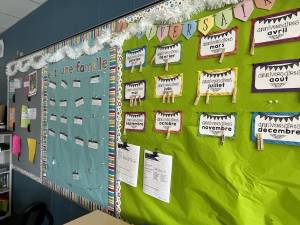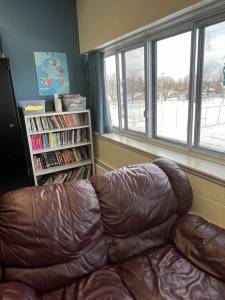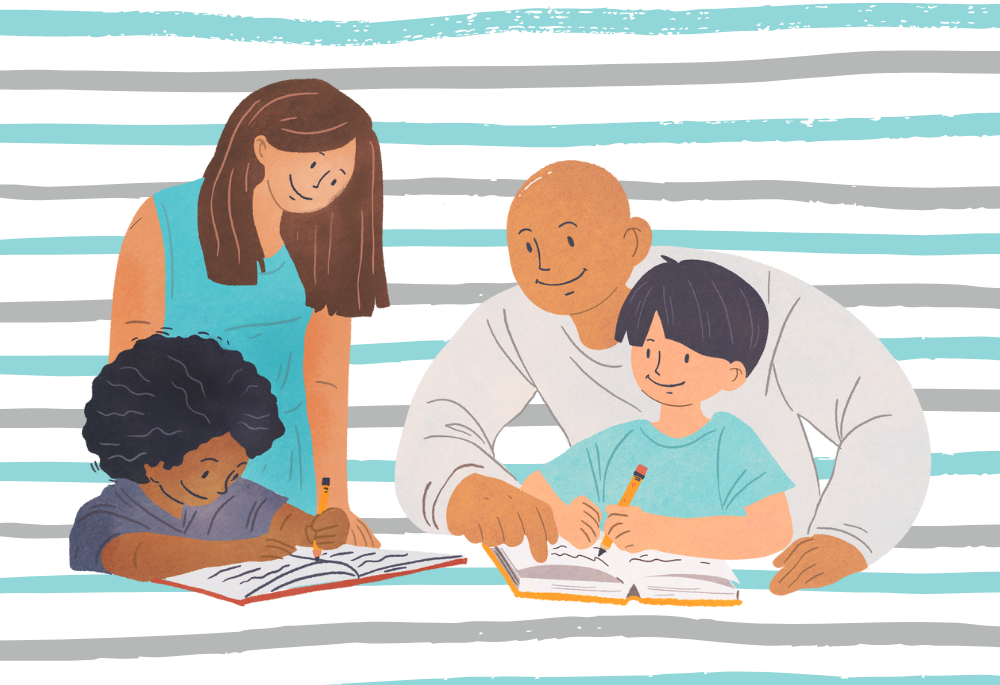Back to school is always a big deal: new binders, new classmates, new rooms… But what happens when the newest part of the year is the brand-new teacher?
Lindsay has a Bachelor’s of Education specializing in the preschool and elementary levels, and in 2021-2022, for the first time ever, is completely in charge of her own classroom full of kids. Let’s see what she has to say…
Q: Tell us a bit about your students. What is the hardest part of teaching grade school, especially having a class of third to sixth graders?
 A: My classroom is composed of 22 students: six 3rd graders, six 4th graders, four 5th graders, and six 6th graders. They are some of the most independent, energetic, curious, and kind students I have ever worked with. Teaching in a multi-level classroom, especially when it’s four different grade levels, has its advantages and disadvantages. The diversity in grade levels encourages what we call “coeducation” between students. You will often see them working in partners or teams where the older and more advanced students lend a hand to the younger ones. This not only benefits the younger students who get to learn from their peers, but the older ones as well who develop their sense of community (helping others) and independency. This is also greatly beneficial to me as a teacher, because I can focus on a few students at a time during work periods, because I know the others can help each other when I am unavailable to them.
A: My classroom is composed of 22 students: six 3rd graders, six 4th graders, four 5th graders, and six 6th graders. They are some of the most independent, energetic, curious, and kind students I have ever worked with. Teaching in a multi-level classroom, especially when it’s four different grade levels, has its advantages and disadvantages. The diversity in grade levels encourages what we call “coeducation” between students. You will often see them working in partners or teams where the older and more advanced students lend a hand to the younger ones. This not only benefits the younger students who get to learn from their peers, but the older ones as well who develop their sense of community (helping others) and independency. This is also greatly beneficial to me as a teacher, because I can focus on a few students at a time during work periods, because I know the others can help each other when I am unavailable to them.
However, teaching in a class of 8 to 12 year olds does require a lot of organization and even more differentiation than in a typical classroom. I have to make sure my lessons correspond to each student’s level, which sometimes means making multiple versions of the same exercises. A class of 8 year olds to pre-teens also means that there can be some issues around behaviour. For instance, I remind my older students that the younger ones look up to them and that they have to be careful of the way they act and speak, because the younger students pick up on their words and behaviours very easily. A mixed level classroom also means practicing tolerance and acceptance of others’ abilities and understanding that not everyone is at the same level whether that may be academically, emotionally or socially—and that that’s okay.
Q: What is the best advice you received going into this new job?
A: A piece of advice that was given to me and that I would give to anyone else, no matter if they are a new or experienced teacher is: ask for help! A lot of teachers believe they need to know everything, be good at everything, and figure everything out themselves, but this is completely false! I am lucky to work in a school where all educators work and come together for the students. I know I can count on my teacher colleagues, the special education technicians, the school psychologist, and the principal, among others, to help me help my students. If you’re questioning the way you should teach or evaluate a subject, if you’re not sure on how something works or the best way to deal with a difficult situation in your class, ask your colleagues. If they’re anything like mine, they’ll gladly share their experiences with you and support you in any way they can.
Q: What has surprised you most about teaching?
A: Even though this is my first year as an official teacher, I have worked in classrooms since I was 16 years old and the practical teaching experience during my Bachelor’s prepared me very well for the teaching world. There isn’t much that surprises me about the job, but one thing I had never experienced was everything that comes with being the main teacher of a classroom. From 7 am until 7 pm, my life is about teaching: lesson planning, printing, laminating and cutting out educational games, preparing activities for my quicker students, answering e-mails, helping students solve disagreements, photocopying, attending staff meetings, writing report cards, meeting parents, grading projects… A day of teaching is a non-stop marathon. I, like many other educators out there, need to remind myself that I am allowed to take time for myself, and that I don’t need to prep and grade every evening (although it’s hard not to!). Self-care is important and no teacher should feel ashamed to take the time they need to take care of themselves first.
Q: What is it like to jump into teaching in the middle of a pandemic?
A: The pandemic has been difficult on all of us, but schools have adapted really well to meet the academic and emotional needs of their students to ensure that school is a place where they can be happy and learn. To me, teaching in a pandemic means that I have to remind myself every day of the realities of my students. The last time my 3rd to 6th graders had a normal school year, some of them were in kindergarten and my older ones were only in 3rd grade! This means that I take more time now to teach some notions or to go over expected behaviours in a classroom or in school. I know they need support and compassion now more than ever and I make sure to give it to them every day.
Q: How did you set up your classroom? What makes it YOUR space, for you and your students?
A: I am currently replacing a teacher who is away, which means that when I showed up to my classroom, a lot of the furniture and material was not my own.

I did as best as I could with what I had and was able to create an environment that met mine and my students’ needs. For example, because we focus so much on coeducation and teamwork, my students are always seated in teams of 5 or 6. You will never see rows of desks in my classroom. I am also lucky enough to have some flexible seating arrangements available to my students. We have two stationary bikes, a couch, multiple “work stations” (tables set up around the classroom where they can do work), as well as a table where they can stand and work. I have a little reading corner in my classroom which also serves as a “calm down corner” whenever a student needs some time to themselves to recentre before coming back and participating in an activity.

Q: How have you used our books in the classroom?
A: The One Story a Day for Beginners collection has been helpful for my students who need some extra support in reading comprehension. Every day, they take the book of the month, turn to today’s date, read the story, and take turns explaining what they understood from it. Knowing the story is only a page or two long is encouraging to them and they enjoy learning about a new topic every day.
You can get your own copy of whichever One Story a Day set suits your classroom’s needs:
- One Story a Day for Beginners (ages 5-7 in French or English)
- One Story a Day for Early Readers (ages 8-10 in English – French coming soon!)
- One Story a Day for Junior High (ages 11-15 in English)
- One Story a Day for Science (ages 8+ in English – more books on the way)
[embedyt] https://www.youtube.com/watch?v=ZwPxd10LbgM[/embedyt]

